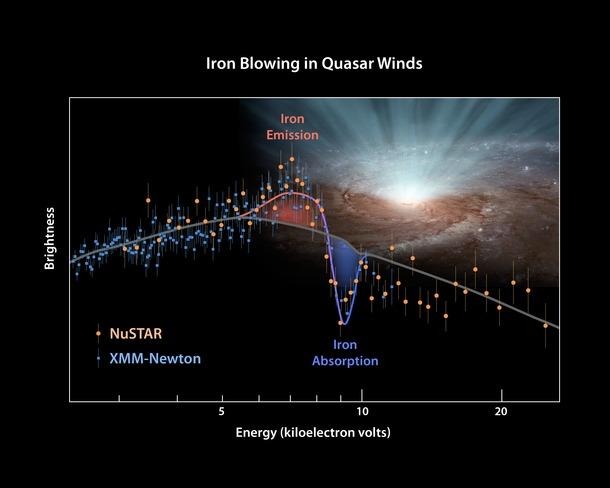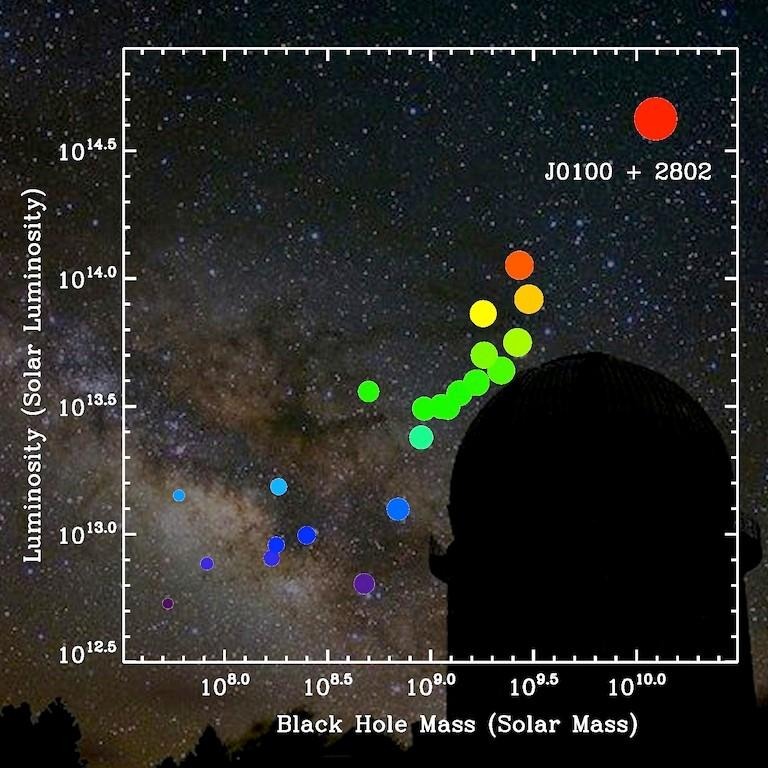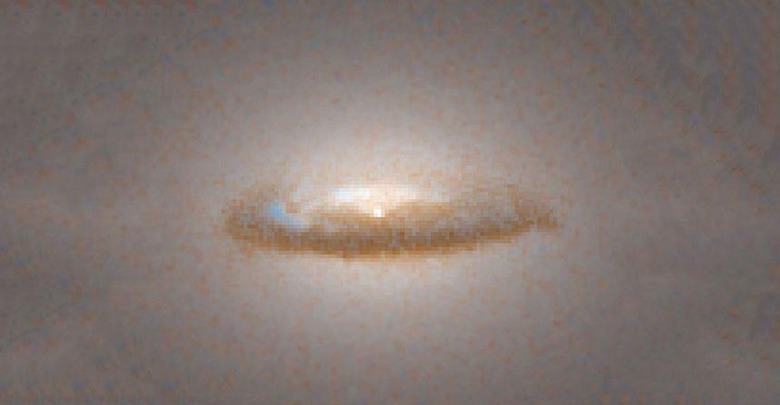Supermassive Black Hole's Quasar Is Fastest Ever Formed
Scientists lead by Xue-Bing Wu from Peking University have spotted a quasar that dates back nearly to the beginning of time. This beast goes by the name of SDSSJ010013.021280225.8 – or if you want to be short about it, just SDSS J0100+2802. What makes this monstrous heavenly body so important is its age and its size. While it's not the largest black hole ever detected, it's still 12 billion times our own Sun's mass – and it's sitting in the center of a quasar that's very, very bright.
What's a quasar, you might ask? It's a quasi-stellar radio source – a bunch of energy given off by mass falling into a black hole. We spoke about this process recently in our feature:
See: Black hole's bad breath could hamper the heavens.
The image you see above comes from artist M Kornmesser and the ESO. "Artist's impression of J0100+2802."

The above image shows how black hole winds blow as observed by iron emissions. Credit: NASA/JPL-Caltech/Keele Univ.
A lot of that light is iron – that's how we detect these things in a lot of cases. Energy is blasted out from a space surrounding a black hole and we're able to – therefor – detect the black hole's existence.
"This black hole at the centre of the quasar gained enormous mass in a short period of time, said researcher Fuyan Bian, who also went on to suggest that this discovery challenges previous theories on how black holes are able to form and grow in the early universe. "Forming such a large black hole so quickly is hard to interpret with current theories."

Image credit: Zhaoyu Li/Yunnan Observatory
See that big red dot in the upper-right? That's the quasar we're talking about today. It's very, very bright. This is one of the most massive black holes ever found and THE highest luminosity found in all known quasars.
Data from the 2.4 metre Lijiang Telescope (LJT) in China, the 8.4m Large Binocular Telescope (LBTO) in USA, the 6.5m Multiple Mirror Telescope (MMT), the 6.5m Magellan Telescope in Las Campanas Observatory, Chile, and the 8.2m Gemini North Telescope in Hawaii were all used to discover and substantiate the existence of this quasar and black hole.
"This quasar is unique," said Professor Xue-Bing Wu at Peking University. "We are so excited, when we found that there is such luminous and massive quasar only 0.9 billion years after the Big Bang."
"Just like the brightest lighthouse in the distant universe, its glowing light will help us to probe more about the early universe."

This information was gathered from the paper "An ultraluminous quasar with a twelve-billion-solar-mass black hole at redshift 6.30" published in the latest issue of the journal Nature. That'll be Nature 518, 512–515 (26 February 2015) doi:10.1038/nature14241.
Authors of this paper include Xue-Bing Wu, Feige Wang, Xiaohui Fan, Weimin Yi, Wenwen Zuo, Fuyan Bian, Linhua Jiang, Ian D. McGreer, Ran Wang, Jinyi Yang, Qian Yang, David Thompson, and Yuri Beletsky.
